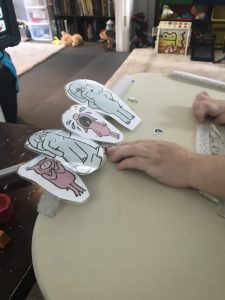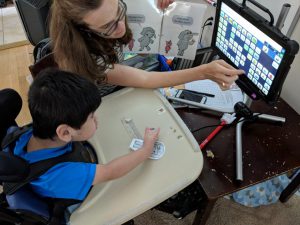 Wait time is one of the most vital supports we can give a child (or an adult). I’ve written about it numerous times on this blog. While it doesn’t involve any extra supports, gadgets, or tools, it is still recognizably hard to do. We, as teachers and parents, aren’t good at waiting.
Wait time is one of the most vital supports we can give a child (or an adult). I’ve written about it numerous times on this blog. While it doesn’t involve any extra supports, gadgets, or tools, it is still recognizably hard to do. We, as teachers and parents, aren’t good at waiting.
We aren’t good at providing enough in-person waiting time. Now that we are doing most of our work on-line, wait time is even more complicated. Not only do we need to wait to provide our students with the same processing time they need to respond in our in-person work, now we also have to account for a computer delay, the time it may take a child to unmute or speak into the computer, or to process the additional virtual and auditory information coming from the computer screen while shutting out the in-person visual/auditory information coming from real life.

 As we get further and further into this period of self-quarantining, we are all becoming more and more restless. When will we go back to normal? When will we be able to see our friends and family in person again?
As we get further and further into this period of self-quarantining, we are all becoming more and more restless. When will we go back to normal? When will we be able to see our friends and family in person again? As a parent, I often feel that I am drowning in the resources that are out there right now during our period of quarantine. As we get deeper into our quarantine situation, more and more resources are popping up to support our children. It’s a wonderful problem to have – but can be difficult to navigate!
As a parent, I often feel that I am drowning in the resources that are out there right now during our period of quarantine. As we get deeper into our quarantine situation, more and more resources are popping up to support our children. It’s a wonderful problem to have – but can be difficult to navigate! I rely heavily on the
I rely heavily on the 
